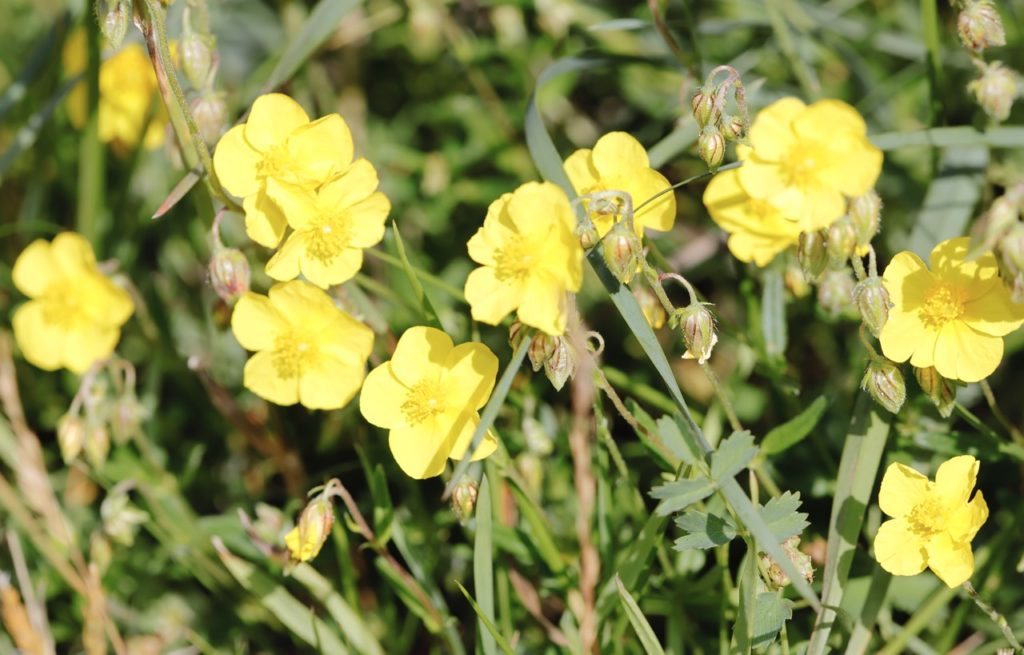SHRUBS > HELIANTHEMUM > PRUNING
IN THIS GUIDE
HELIANTHEMUM GUIDES

PruningVarieties
As hardy plants with low - grow tendencies helianthemums are the stark selection for a rock music garden or for providing ground cover .
It ’s no surprise , then , that they ’re more normally known as rock ‘n’ roll rosiness and are hugely pop all across the UK .

Their class - stave perfumed leafage provide machination throughout the wintertime months , while the profusion of fragile flowers in spring is a true delectation to behold .
They generally bloom for five or six year , but their fragrance and foliage will endure for far longer .
The perdurable nature of sunrose means that pruning them is not rigorously necessary ; they ’ll do just ticket on their own in almost any soil as long as they get enough sun .

However , pruning helps to continue their shape , protract the lifespan of their blossoms and even advance a 2d flowering in the same year .
Here ’s how to go about it :
To make the job of trim your rock get up plant as simple as possible , we ’ve crystallize each of those steps in keen detail below .

When To Prune
As mentioned above , cut back rock roses is not obligatory , but you may wish to do so after the blooming period has come to an remnant for several reasons .
first of all , this will forestall the lusterlessness - forming plant from encroaching on the terrain in its locality and keep its esthetically pleasing mannequin .
Secondly , pruning sunrose just after they have stop flowering can encourage them to bring forth more blooms in late summertime or early autumn .

However , the climate of the domain in which you hold out must be favourable for this to come , since sunrose are of Mediterranean origin and have it off the sun .
Finally , cut back your helianthemum once a year can help to extend its blooming lifespan .
unremarkably such plant only bring out flush for a handful of years , but if you stick on top of your specimen and conserve its energies for the future , you may prolong this by a year or two more .

1) Prepare Your Tools
This step is often overlooked by both amateur and veteran gardener , but as someone who has suffered personally from the use of tools unfit for the job , I ca n’t recommend it highly enough .
Blunt sword can damage stems , while foul ones can spread disease .
To avoid either undesirable upshot , only sharpen the blade of your secateurs or cut back shears before use .
Next , soak a clean cloth in isopropyl alcohol and thoroughly pass over all detritus from them .
Repeat the clean - up business after use , as well .
2) Deadhead Daily
Helianthemum ’s beautiful blossoms are exceedingly fleeting , with many flowers hold out just a undivided day .
However , the plant makes up for this shortage by producing an amazing cornucopia of blooms throughout the season .
As such , it ’s a good musical theme to remove all deadhead as soon as they seem .
This will not only keep your plant looking vibrant and resplendent but also allow for good circulation of air among the root and prevent the development of blights and disease .
Of of course , the sheer rate of blooming may make day-to-day deadheading unfeasible , but doing the job as often as potential will suffice .
3) Prune After Flowering
Once the plant has stopped flower whole , it ’s time to rationalise it back .
Target longer , woodier stems which distort the voluptuousness of the works ’s form , trimming it back into the desired shape .
you could pare back these stems to around two - thirds of their length to keep things neat and tidy .
As a general linguistic rule , you do n’t desire to take any more than 5 - 8 cm away from a individual stem , and you should never sheer back more than a third of the whole plant .
Leave the old wood alone to debar jeopardize the helianthemum ’s wellness come winter time , and instead focus on newer growth .
4) Remove Weeds & Mulch
tuck up all discarded stem turn and leafage and dispose of them fittingly to minimise the risk of disease .
Remove any weed or invasive plants which may be encroaching on the rock uprise ’s territory to ensure it does not have to struggle to compete with others and that its appearing remains attractive .
“ withdraw plants that might compete for light is fundamental to maintain Helianthemum , as competition will cause spook and without adequate light they will not thrive , ” explain Horticultural Consultant Colin Skelly .
Finally , mulch with compost after pruning to keep wet in the grease and give the new shoots the best chance of developing and of produce a second efflorescence later in the year .
Well - rotted compost or manure can be used for this task , but bark cow dung are overly acidic and should be avoid .